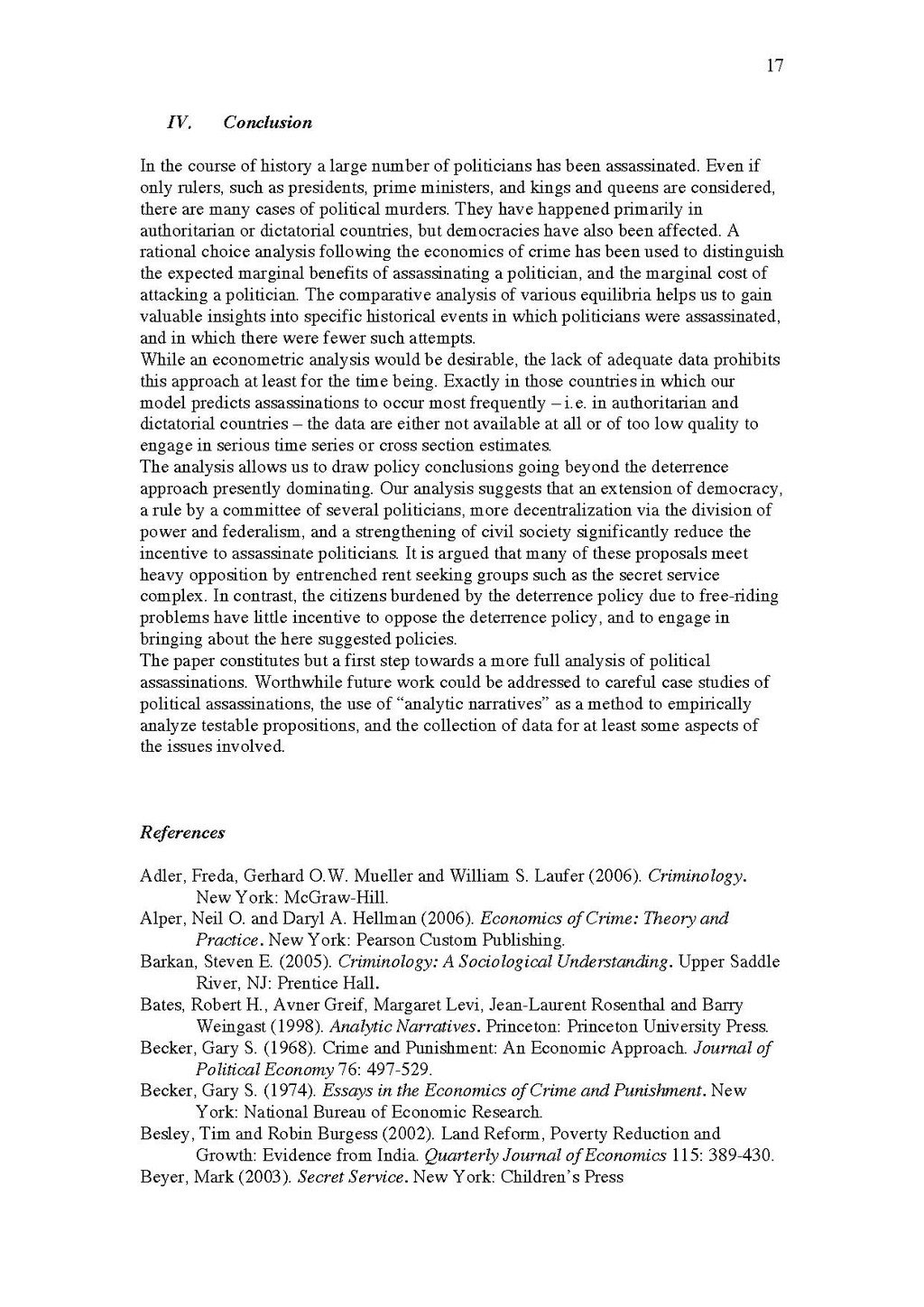In the course of history a large number of politicians has been assassinated. Even if
only rulers, such as presidents, prime ministers, and kings and queens are considered,
there are many cases of political murders. They have happened primarily in
authoritarian or dictatorial countries, but democracies have also been affected. A
rational choice analysis following the economics of crime has been used to distinguish
the expected marginal benefits of assassinating a politician, and the marginal cost of
attacking a politician. The comparative analysis of various equilibria helps us to gain
valuable insights into specific historical events in which politicians were assassinated,
and in which there were fewer such attempts.
While an econometric analysis would be desirable, the lack of adequate data prohibits
this approach at least for the time being. Exactly in those countries in which our
model predicts assassinations to occur most frequently – i.e. in authoritarian and
dictatorial countries – the data are either not available at all or of too low quality to
engage in serious time series or cross section estimates.
The analysis allows us to draw policy conclusions going beyond the deterrence
approach presently dominating. Our analysis suggests that an extension of democracy,
a rule by a committee of several politicians, more decentralization via the division of
power and federalism, and a strengthening of civil society significantly reduce the
incentive to assassinate politicians. It is argued that many of these proposals meet
heavy opposition by entrenched rent seeking groups such as the secret service
complex. In contrast, the citizens burdened by the deterrence policy due to free-riding
problems have little incentive to oppose the deterrence policy, and to engage in
bringing about the here suggested policies.
The paper constitutes but a first step towards a more full analysis of political
assassinations. Worthwhile future work could be addressed to carefUL case studies of
political assassinations, the use of “analytic narratives” as a method to empirically
analyze testable propositions, and the collection of data for at least some aspects of
the issues involved.
References
Adler, Freda, Gerhard O.W. Mueller and William S. Laufer (2006). Criminology.
New York: McGraw-Hill.
Alper, Neil O. and Daryl A. Hellman (2006). Economics of Crime: Theory and
Practice. New York: Pearson Custom Publishing.
Barkan, Steven E. (2005). Criminology: A Sociological Understanding. Upper Saddle
River, NJ: Prentice Hall.
Bates, Robert H., Avner Greif, Margaret Levi, Jean-Laurent Rosenthal and Barry
Weingast (1998). Analytic Narratives. Princeton: Princeton University Press.
Becker, Gary S. (1968). Crime and Punishment: An Economic Approach. Journal of
Political Economy 76: 497-529.
Becker, Gary S. (1974). Essays in the Economics of Crime and Punishment. New
York: National Bureau of Economic Research.
Besley, Tim and Robin Burgess (2002). Land Reform, Poverty Reduction and
Growth: Evidence from India. Quarterly Journal of Economics 115: 389-430.
Beyer, Mark (2003). Secret Service. New York: Children’s Press
IV. Conclusion
